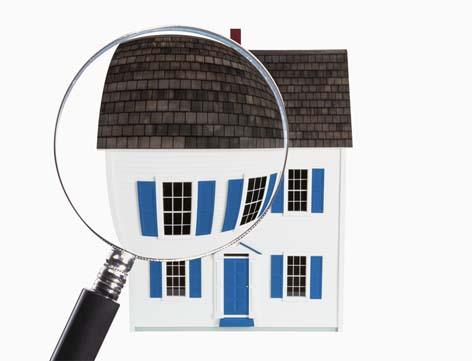What do appraisers look at when evaluating homes? What tools and data points to they consult? Steve Kahane of Greater Houston Area Appraisals explains.
Realtors and appraisers don’t always see eye-to-eye when it comes to valuing homes. This can be especially frustrating when seemingly everything else is working well in the booming Houston market. I’ve put together some of the most common reasons homes don’t appraise and some suggestions to try and help make sure you don’t run into any problems.
With sales and prices up, everything about the real estate market seems great, but making value in an appreciating market can be tough for appraisers. This is because of an inherent flaw in appraisal methodology.
Appraisals use sales from the past to determine current market value. In a rapidly changing market, the past may not accurately depict the current market conditions. While appraisal methodology can adjust for an appreciating market, many appraisers are reluctant to do so for fear of push back from underwriters.
To combat that problem, always let the appraiser know if you have multiple offers, and be willing to accept back-up offers no matter how good the first offer is. This suggests market acceptance of the pricing of your home and not a lone rogue buyer offering too much out of ignorance or exuberance. If your market is improving, make sure the appraiser knows it.
One way show this is by use of the statistical features in the Tempo MLS. If the average neighborhood sales price for the past 12 months is more than 3 percent higher than the prior 12 months, it’s a pretty good argument that the market is appreciating. In some cases, the prices don’t yet reflect the increases but the leading indicators; marketing times, supply of homes, sales volume and list to sales ratios indicate an imbalance in supply and demand that precedes an appreciating market. Given an appreciating market or multiple offers, an appraiser may be able to make market condition adjustments and justify a higher value.
Appraisers rely more on sales than active listings or pending sales because a closed sale is evidence of how much a buyer was willing to pay and when they paid it. A listing may never sell, and if it does, we don’t know when or at what price. Always consider the competing listings when marketing a home, but be aware of the sales when accepting an offer.
Appraisers have guidelines when selecting comparables. Fannie, Freddie, FHA, etc., have guidelines for what is considered comparable. Individual lenders may have additional restrictions as well. In general, comparables that require adjustments of more than 10 percent for any individual characteristic (size, quality, view, etc.), 15 percent for the net adjustments and 25 percent for the gross (sum of all) adjustments suggest a lower level of confidence and therefore higher risk.
As such, a 3,000 square foot home would not likely meet these criteria when appraising a 2,000 square foot home. Similarly, a $200,000 home is a poor comparable for a $300,000 home, regardless of what adjustments you feel are warranted. The thinking is if a comparable needs that much adjustment, it is not really comparable. When selecting comparable sales, the fewer the adjustments, the better.
By far the most common reason some homes fail to appraise is because of price per square foot ($psf) valuation. The $psf is the fastest and easiest way to value a home, but because it is so simplistic, it is the most wrought with error. $psf assumes that the entire value of a home is based on the number of square feet it contains. It fails to distinguish between fixed costs and variable costs.
Fixed costs (lot, appliances, site improvements, garage) remain roughly the same regardless of the size of the home, and may make up 30 to 40 percent of value in a suburban location and even more in areas with high land values (The Heights, Memorial Villages). $psf becomes most problematic when comparing two different size homes. In theory, if two homes have similar fixed costs of $50,000, a 1,000 square foot home should cost $25 per square foot more than a 2,000 square foot home, because the fixed costs are divided by a smaller number. This is why larger homes typically have lower $psf cost than similar smaller ones.
To find out how much buyers really pay for each additional square foot of home, compare two homes of different size that are similar in all other aspects. Both are two-story, don’t have a pool, no view premiums, the same number of baths, etc. Subtract the lower sales price and divide that by the difference in square feet. Typically that number amounts to 25 to 50 percent of the sales price per square foot. So when pricing a home, $psf is okay to use when making an apples to apples comparison. Short of that however, keep in mind that smaller homes typically have a higher $psf than larger ones, and one-story homes typically have a higher $psf than two-story homes.
 Steve Kahane is the owner of Greater Houston Area Appraisals and a certified residential appraiser. He can be reached at:
Steve Kahane is the owner of Greater Houston Area Appraisals and a certified residential appraiser. He can be reached at:
Phone: 832-875-6090
Email: steve@ghaa.net
Fax: 832-550-2070
Website: www.ghaa.net

